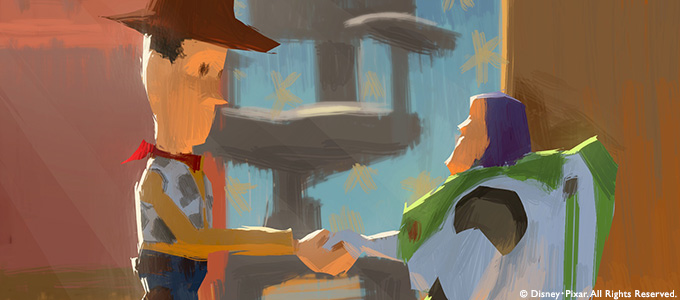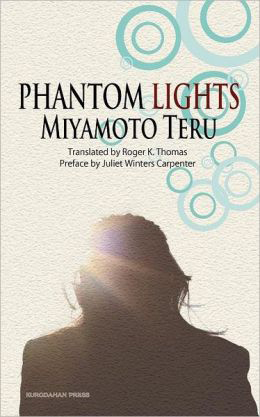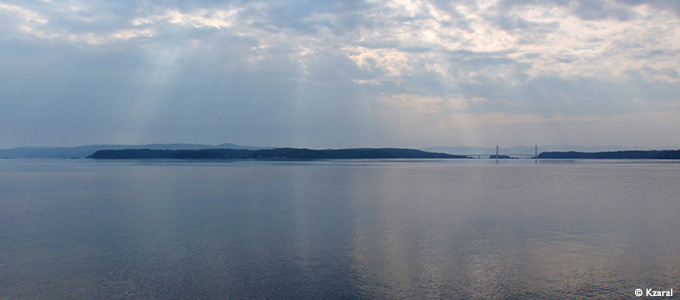
Unforgettable Colors
An art director is a color expert. That makes Mr. Tsutsumi of course, twice as sensitive to the slightest difference or changes in tonality. However, that isn’t enough for filmmaking. In order to control the audience’s emotional reactions through unique complexions of color, experience and conceptual thinking become essential.
“For example, in order to build dynamics into a film, the picture needs to be reviewed as a whole. Then we assemble parts by contemplating how to use certain colors, where they need to intensify the most, and how it should appear in the current scene. As in limiting the usage of the color until the story reaches its height where it then goes full blast. Colors become alive, ultimately, by supporting the storyline. ‘Oh how pretty…’ just won’t cut it, and is not the point in making a movie. Especially at Pixar where incredible artists congregate, if I cannot logically convey my sense of color, no one will be convinced by what I say.”
“The choices in color could be intuitive or theoretical. There are different methods depending on the art director. I am the type to introduce logic into it. But by that I don’t mean a theoretical approach is the correct way. Rather, because I already rely on my own intuition, I also need to look at it objectively. Meanwhile, after narrowed down by methodical selecting, the final decision on color could be up to me. That may be where my particularity comes in.”

Mentioning the unique light of Japan, Mr. Tsutsumi reminisced about the “lead-colored sky” he saw on his solitary journey in Noto Peninsula ten years ago. This “lead-colored sky” is a phrase from Japanese author Teru Miyamoto’s short story Phantom Lights. A woman who is left behind with two children by her husband who committed suicide, is remarried to a man that lives in a fishing village in Noto Peninsula. The masterpiece illustrates the story of her new life and wavering heart, coated with a wash of colors from the harsh winter of Hokuriku, Japan.
“There was a time when I used to devour the literature by Teru Miyamoto. His body of work, especially from when he lived a short but intense time in Toyama struck me. His suffering was vivid on the pages. Rather than his hometown Osaka, I had the desire to visit Toyama one day. In my late twenties, I happened to get my dream job in animation, but was taken over by loneliness thinking about how to start living my life all alone. I didn’t have a lover or anyone to depend on, and that is when I remembered and decided to visit the place from the novel.”
“Heading north from Tokyo on the bullet train, the first phrase from Yasunari Kawabata’s Snow Country, the one that any Japanese will know, came to mind. The train came out of the long tunnel into the snow country. It was just like that. From my window I saw tons of snow. It wasn’t anything like the pleasant snow of New York City before Christmas. (laugh) But it was snow that fell heavily from that ‘lead-colored sky.’ After that I went to the shores of Toyama where the rough waves of the Sea of Japan came crashing down, Kaboom! The sound astounded me completely, and even my worries seem to get blotted out.”

“Around the fourth day there, my state of mind had completely tuned-in to the ‘lead-colored sky.’ I became extremely depressed. (chuckle) I know I visited more places… but that sky in lead gray is just about all that is left in my memory. Looking back that was a very heavy trip in my life, and I feel it was a journey for self-discovery. Thanks to that trip, I felt like I got a full ‘spray-down,’ and it became a turning point in my life. Maybe the Sea of Japan is a place that has those effects.”
Several years after that solitary trip that served almost like a purification ceremony, Mr. Tsutsumi was given the big job as an art director for Pixar. Although he had never spoken English nor had drawn a picture until he was eighteen, the language of “color” has given him the means to communicate with audiences all across the world.
“At the end, what is important to filmmaking is how badly you want to ‘communicate’ to the audience. Some creators are satisfied as long as they have expressed themselves fully, even without getting through to the viewers. Others create with hopes that people take it in a certain way. That’s the same for films and any other business. The result, if you make something that everyone wants to see, is good business. And there is no business in making something that no one is interested in.”
“I don’t think American films including Pixar’s, are popular in the world simply because they are readily available. Flattering the audience and trying to convey a message are two totally different things. Here in the US, people of so many nationalities gather and try to converse coming from differing cultural standpoints. I think that is why more work with universality has been created, and there is a need to create more.”
“That doesn’t necessarily mean that works that don’t communicate their messages across the board are failures. It may not show up in numbers, but if even one person got your message, and if that brings fulfillment, then that could be considered a huge success. It is a completely different thing: success for business, and success for the creator. I have always wanted to create something that is what I really want to deliver, rather than for mass appeal. That opportunity maybe with Pixar, through my own illustrations, or even for another project. Either way, as long as there is something I want to convey, I feel like my ‘communication’ continues on.”
People only see what they want to see, and believe what they want to believe. That is why, like gently tuning-in to someone’s heart, it may be important to have the ability to tell a story through colors. When we come across that unforgettable color of our lifetime, and through the journey of films, we discover that the conversation beyond language and culture has already begun.
(Interview: Manami Iiboshi, Translation: Mika Anami)
